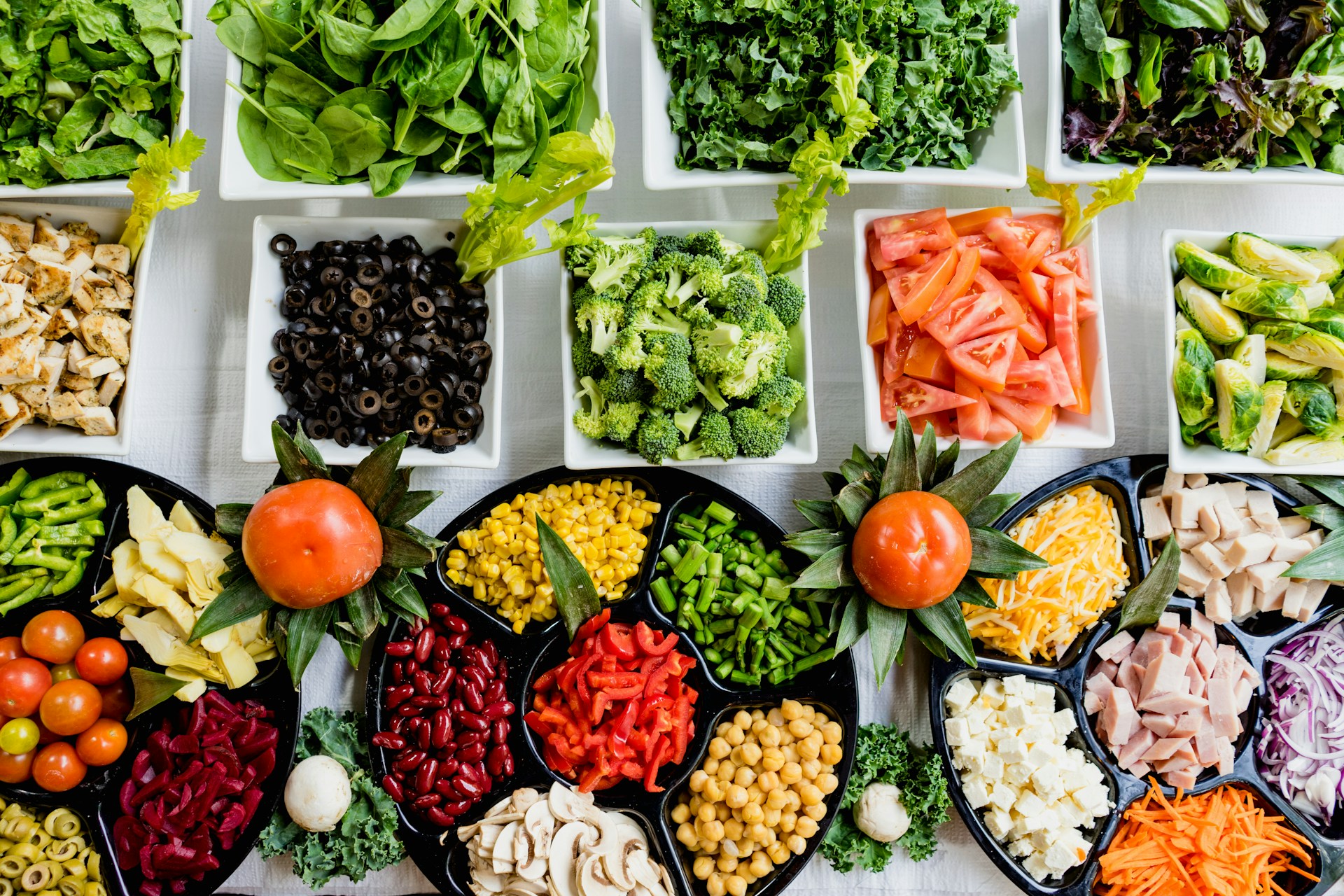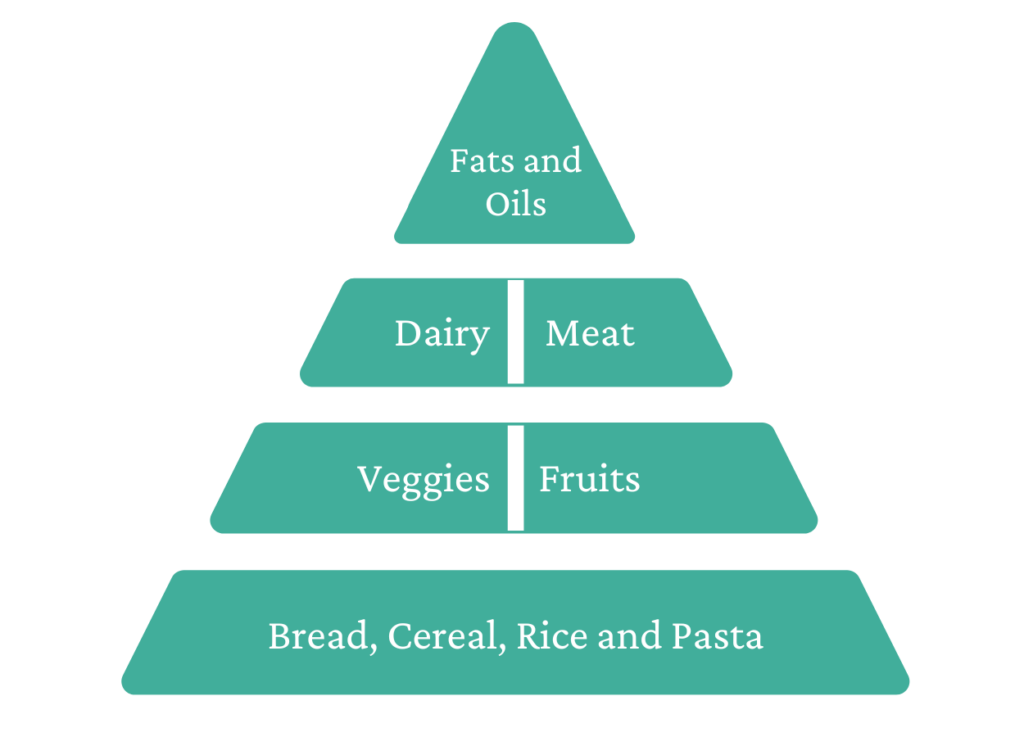
Body + Mind is reader-supported. We may earn an affiliate commission when you buy through some of the links on our site.
Creating healthy meals is more challenging than people often think. You have to get a daily nutritional intake that supports your well-being, but there’s so much to choose from at the grocery store. Check out everything you need to know about the food pyramid chart to become more confident with your meal selections. You’ll trust you’re getting a healthy diet while enjoying your favorite foods.
The food pyramid chart is a visual guideline that helps people include numerous types of food in each meal. People began using it in 1992 after modifying the previous food wheel guidelines. Since then, the U.S. Department of Agriculture (USDA) updated the pyramid multiple times. This is what it looks like today:

The pyramid shape showcases which food groups should occupy the most space on your plate. Whole grains, vegetables and fruits should be the base of each meal. You can add dairy and proteins afterward, then fill the remaining space with oils and healthy fats.
The five levels of the food pyramid are common food groups people use to make breakfast, lunch and dinner. They consist of these specific ingredients:
Sometimes, people add a fifth level to the food pyramid to include less healthy foods like desserts and processed snacks. You should enjoy those options in your diet too, but in smaller portions. Whole foods and organic ingredients will provide more nutrients that keep you healthy and feeling your best.

If you find the food pyramid chart a bit confusing, you’re not alone. Follow these steps to make meals with the various categories. You’ll become more familiar with how to use various ingredients as you practice.
People sometimes think grain sources like rice or pasta are inherently bad for you. The myth stems from harmful diet culture practices. In reality, pasta, rice and bread are the basis of a well-rounded diet. It all depends on which ones you choose.
Your next dinner could feature hamburger buns made with sprouted bread. Sprouted grains feature nutrients like vitamin C, fiber and protein. Even the french fries on your plate aren’t bad to eat. White potatoes have numerous vitamins and minerals. You’ll have a healthier meal if you choose a bag of fries made with minimal oil or air-fry potato strips at home.
Experts recommend enjoying at least five fruits or vegetables per day. If you incorporate at least one with breakfast, lunch and dinner, you’re almost there. Consider which produce options you like the most or try something new. You could pair freshly sliced watermelon, apples or carrot slices with your burger to make it even more nutritious.
The protein part of the food pyramid chart is surprisingly flexible. You could get your protein from various sources that align with your nutritional preferences or food allergies, like:
Having at least one of these with each meal is a good idea. Protein makes your body generate hunger-reducing hormones so you feel full longer. Follow the serving size directions on your preferred protein’s packaging to better gauge how much to include on your plate.
Dairy is another critical part of the food pyramid chart because it’s nutritionally robust. Whether you enjoy yogurt, cheese or milk, you’ll get minerals like calcium, potassium and phosphorus. Ensure your dairy product doesn’t contain excessive amounts of added sugar to remove the processed ingredient from your diet. You can also opt for lactose-free versions of dairy foods if milk products bother your digestive system.
When picturing oils and fats in the food pyramid, think about olive oil. The organic oil reduces cardiovascular disease risks because it’s anti-inflammatory. You can add this part of the food pyramid to your diet by greasing your cooking pan with olive oil or mixing organic, pasteurized butter into your sauces.

Once you feel more familiar with the food pyramid, it’s much easier to plan what you’ll eat every day. Think about the foods you love most before creating your next grocery list. You’ll find meals that incorporate what you like eating and make each serving healthier by adding these food groups to your daily meals.
The USDA updated its official food pyramid chart in 2011. It now suggests that people follow its MyPlate guidelines, which arrange food categories according to the percentages of each meal. Some people find it easier to understand than the previous stacking style. As long as you follow USDA guidelines, you’re using the correct food pyramid.
You arrange a food pyramid by organizing each food group according to what should make up the most of your meals. Focus first on whole grains, protein sources, fruits and vegetables. They’ll give you enough nutrients and protein to stay satisfied and feel full quickly.
Other options like dairy, natural fats and healthy oils are more nutritionally dense. Your meals should feature them in smaller portion sizes to avoid accidentally overeating them.
Some people also add processed foods to the top of their pyramid, but that’s up to you. The point of a food chart is to never feel like an entire type of food is off-limits. The important thing is learning how to eat healthy portion sizes for each group.
The problem with the food guide pyramid depends on each person. Some people have a hard time understanding the towering pyramid shape. Others prioritize other groups based on their health history. Someone learning to live with diabetes might move their grains up the pyramid because whole grains cause small blood sugar spikes if they’re sensitive to them.
The food pyramid helps with nutrition by showing which food groups are more important to eat with each meal. You can explore the general categories to find more specific ingredients and get creative with your meals while feeling confident in their nutritional value. Watch this video for more information:
Your email address will only be used to send you our newsletter, and at any time you may unsubscribe. For more information, see our Privacy Policy.